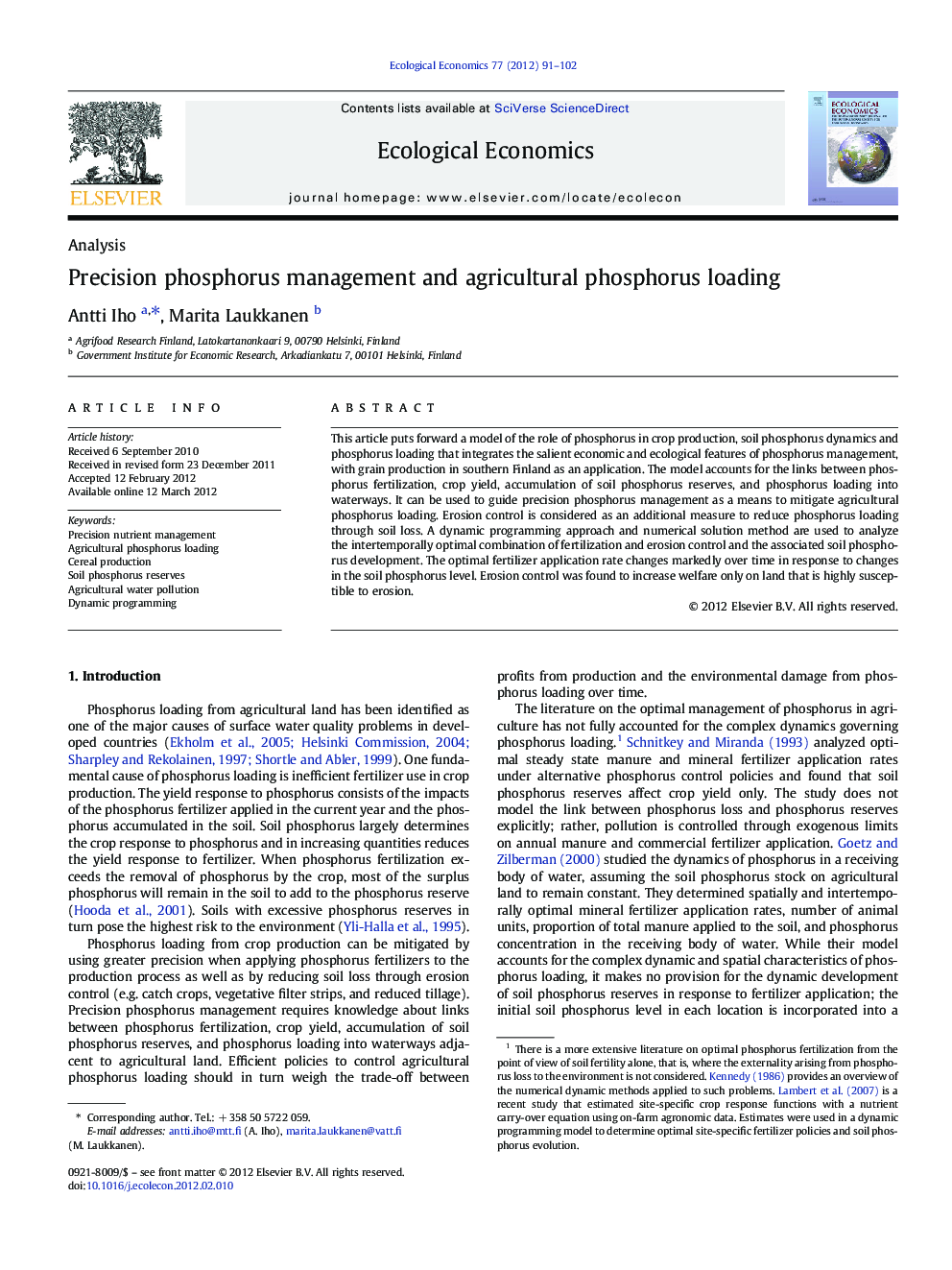| Article ID | Journal | Published Year | Pages | File Type |
|---|---|---|---|---|
| 5050279 | Ecological Economics | 2012 | 12 Pages |
This article puts forward a model of the role of phosphorus in crop production, soil phosphorus dynamics and phosphorus loading that integrates the salient economic and ecological features of phosphorus management, with grain production in southern Finland as an application. The model accounts for the links between phosphorus fertilization, crop yield, accumulation of soil phosphorus reserves, and phosphorus loading into waterways. It can be used to guide precision phosphorus management as a means to mitigate agricultural phosphorus loading. Erosion control is considered as an additional measure to reduce phosphorus loading through soil loss. A dynamic programming approach and numerical solution method are used to analyze the intertemporally optimal combination of fertilization and erosion control and the associated soil phosphorus development. The optimal fertilizer application rate changes markedly over time in response to changes in the soil phosphorus level. Erosion control was found to increase welfare only on land that is highly susceptible to erosion.
⺠We analyze optimal use and control of phosphorus in agriculture. ⺠Our dynamic framework acknowledges farmers' profits and environmental damages. ⺠We show that the use of phosphorus should be conditioned on the prevailing soil phosphorus level. ⺠Erosion control should be focused on the steepest parcels.
